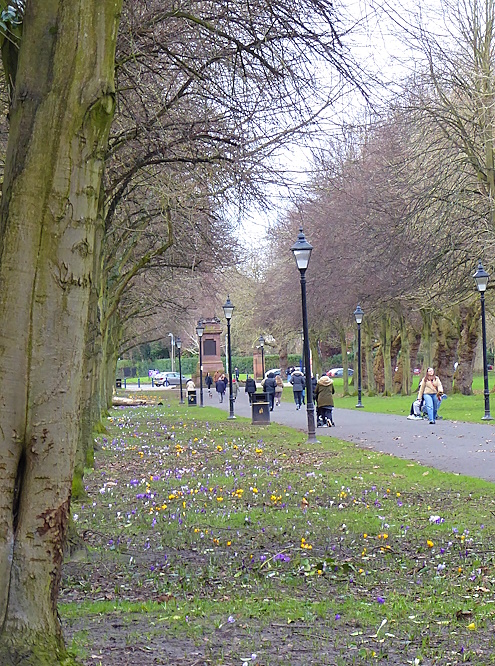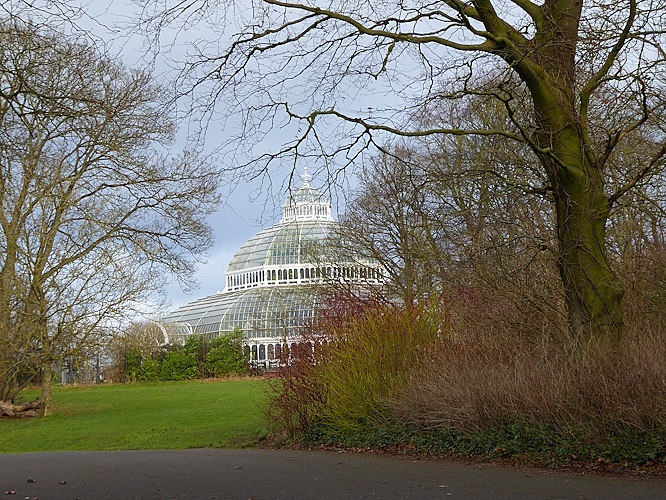
These mild days seem to have fooled some creatures into thinking there is an early spring. Usually there are great flocks of gulls on Sefton Park Lake, but most of the adults appear to have already left for their breeding grounds, leaving just juveniles. But all the other waterbirds were present. Since we are not supposed to feed them bread, Margaret had picked up two Little Gem lettuces reduced to 10p, so we tried it on them. Coots loved it, but the shy Moorhens never got near enough to try. The Mallards were completely unimpressed. The few Tufted Duck out in the middle didn’t come to investigate, neither did the remaining hundred or so Black-headed gulls or the half dozen juvenile Herring Gulls. It was a different story with the Canada Geese, at first wary, but then going for it with gusto. The final test subjects were three Mute Swans further along. After one taste they turned up their beaks and swam away.
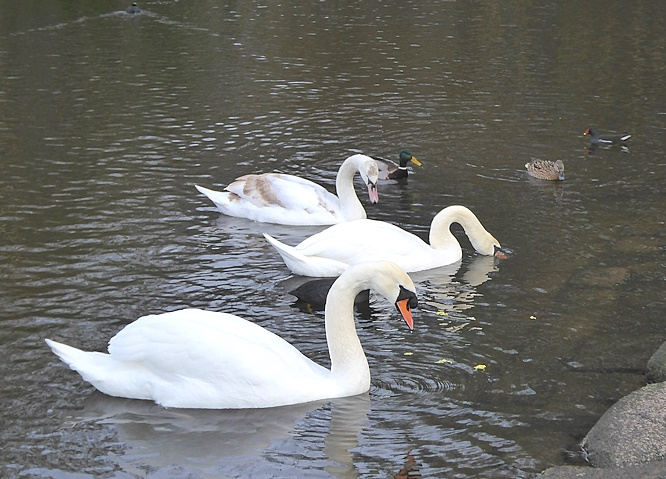
At the northern end of the main lake, by the island, were two Little Grebes, usually one up, one down, but there were definitely two because one was much lighter than the other. Is the pale grey one a juvenile?
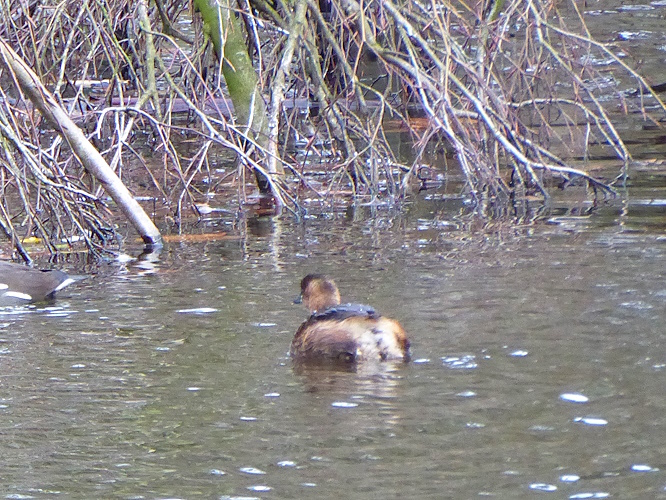
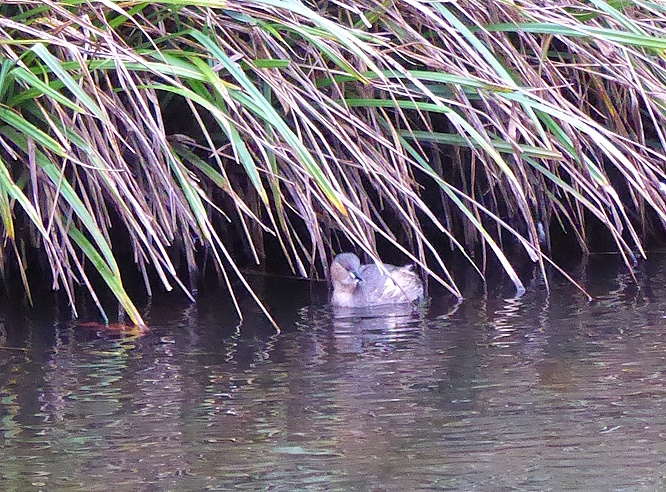
Around the back of the island was something new – a floating island of vegetation. A sign calls it a freshwater ecosystem island, part of the EU funded Urban GreenUP research project on climate change. Its intention is to support pollinating insects, underwater root systems and to see if it reduces algal blooms. Despite also claiming to be a safe haven for wildlife, nesting birds seem to be excluded by the chicken-wire fence around the edge.
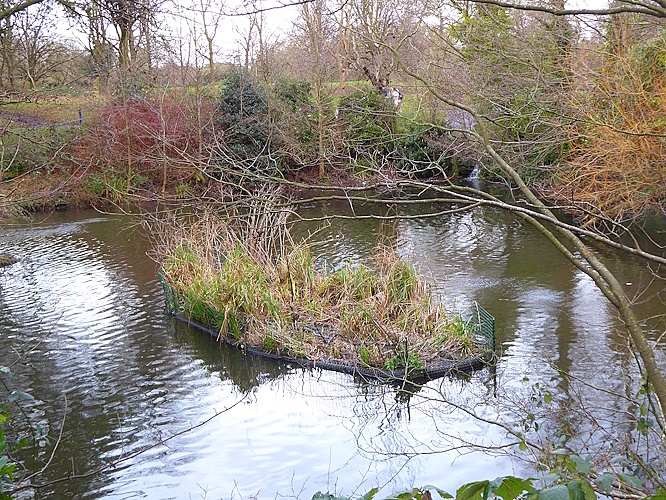
Near the Eros statue, the regular political protest was “Climate Change is a Hoax” We didn’t take the bait. We looked for the prominent Witch Hazel bush which is usually in spectacular flower at this time of year. Sadly, it appears to have been severely cut back, and the flowers were very few, mostly going over.
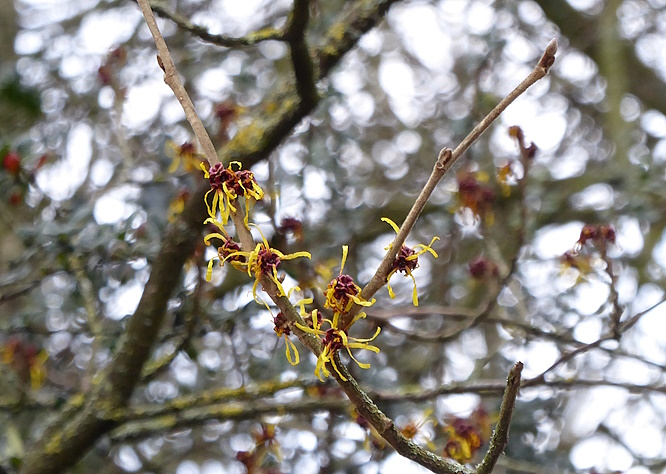
The other winter-flowering shrub there was in fine fettle, however. Sweet Box Sarcococca confusa was flowering sweetly, smelling of honey or jasmine. One website calls it “ambrosial”.
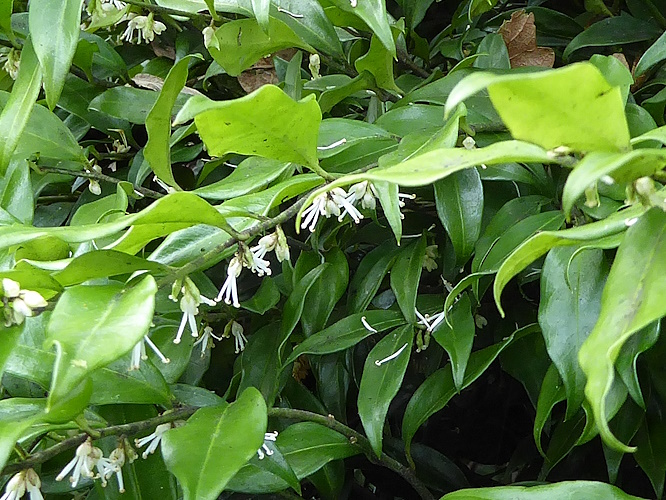
Other signs of spring included a small winter-flowering cherry tree near the Gothic fountain, the winter-flowering Viburnum x bodnantense near the Eros statue, the copious catkins of the Alder trees nearby, the first Hawthorn leaves in a sheltered spot along the Jordan brook in the Dell and the swelling blossom buds of what is probably a young Norway Maple tree near the southern fountain.
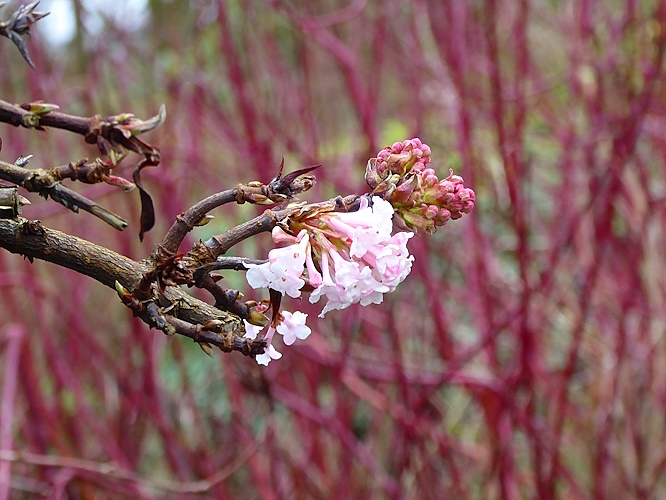
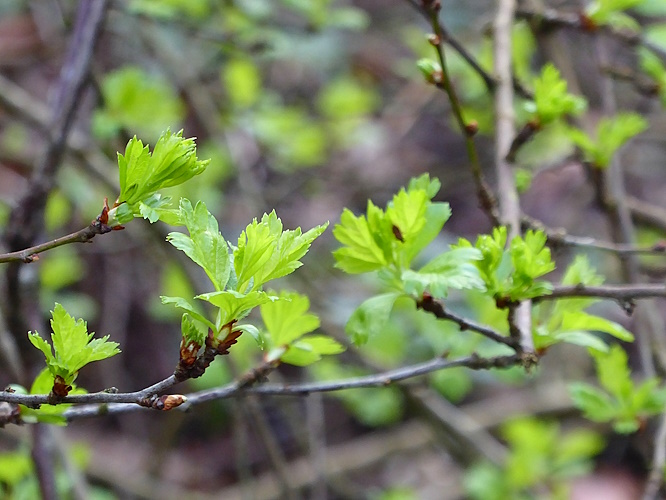
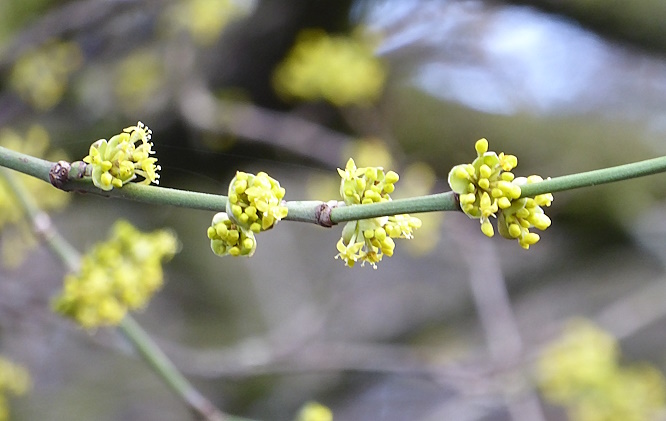
Several times during the day we saw Ring-necked Parakeets fly over and heard them calling. We chatted to a fellow who said there are over 100 of them in the park now, and they are aggressively taking over all the old tree holes that the Stock Doves used to nest in. We also spotted a Nuthatch near the old bowling greens. We had gone that way to see the crocuses along the path to the obelisk. They aren’t at their peak yet. We also admired the row of old London Planes on the opposite side. Clearly planted when the park was laid out (1871/72), they are now over 150 years old but may have many years left in them. The first examples of this hybrid were planted in around 1670 and none has yet died of old age.
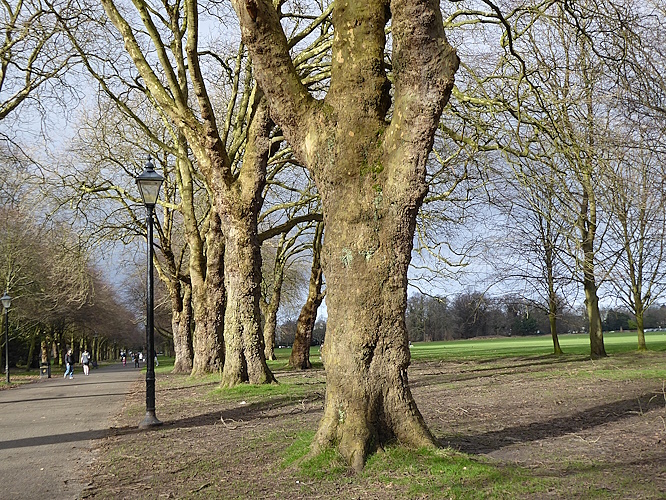
Near the Oasis Café is a Birch tree infected with the bunches of overgrowth called “Witches Broom”. On Birches they are thought to be caused by the fungus Taphrina betulina¸ but don’t usually harm the tree. They are thought to be excellent habitat for many invertebrates, like spiders.
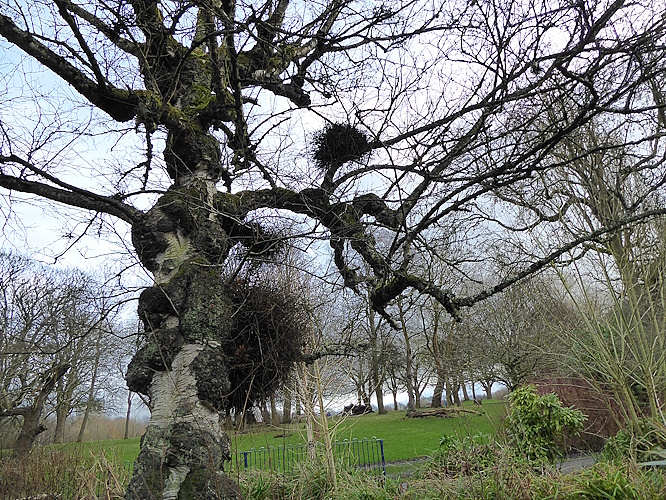
The Persian Ironwood tree on the bank in Dell had very sparse blossom this year, although it’s always a surprise that such a dark twisty tree can produce such amazing little explosions of shocking pink.
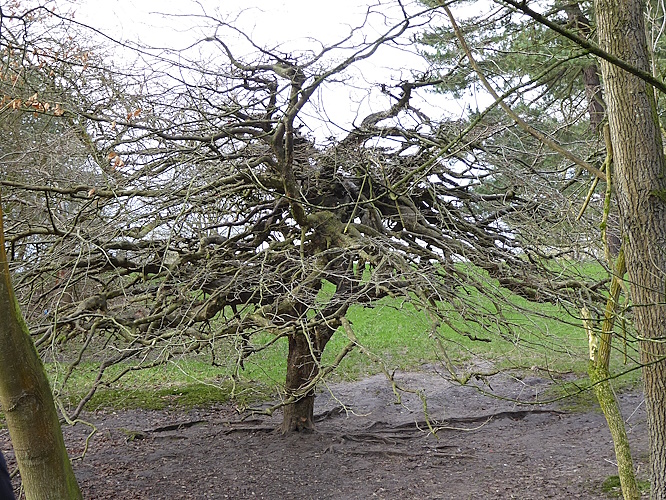
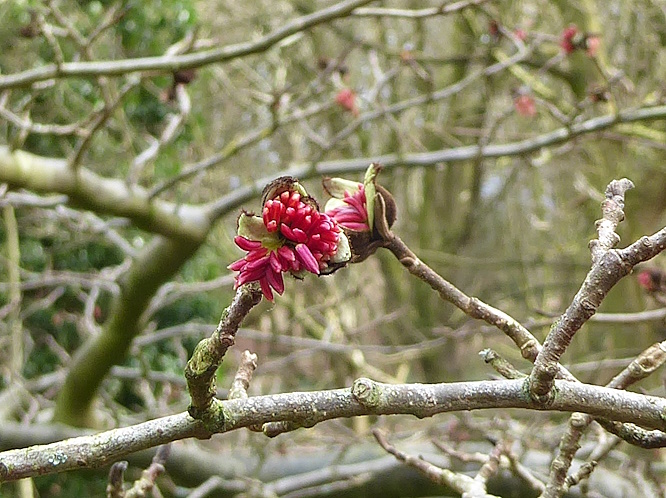
Along the brook called the Upper Jordan there is a new sign about “Leaky Dams”. At intervals along the watercourse, logs and twigs have been piled up, making small weirs and bridges to slow the flow of the water. It increases biodiversity, improves the water quality and reduces flooding of the paths. The work was carried out in January 2022 by staff of the Mersey Rivers Trust using material from the park itself, and funded by the family that run the Oasis café. We spotted one creature using the shelter. A free-living Brown Rat crept out timidly from behind a rock and set off along the bank. Despite most people’s horror at the word “rat” I don’t suppose these country rats are any worse than Grey Squirrels, they just lack the “cute” fluffy tail.
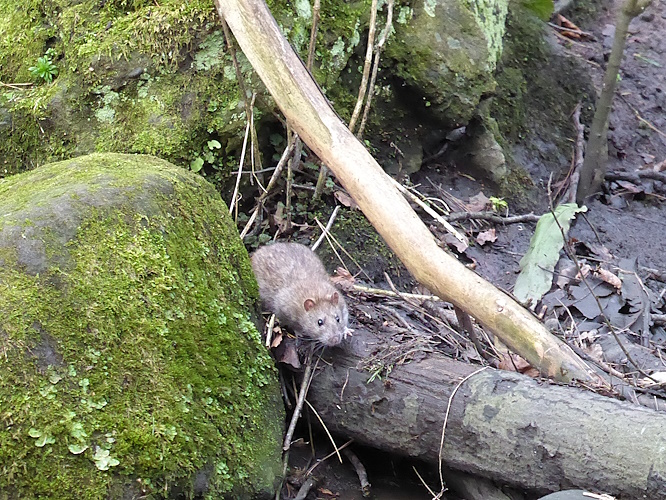
The sun came out, and it was a mild day, but winter will be returning by next week. Some animals and plants may be caught out!
Public transport details: Bus 82 from Elliot Street at 10.10, arriving Aigburth Road opp Ashbourne Rd at 10.25. Returned on 82 bus from Aigburth Road / Jericho Lane at 2.06, arriving City Centre 2.25

